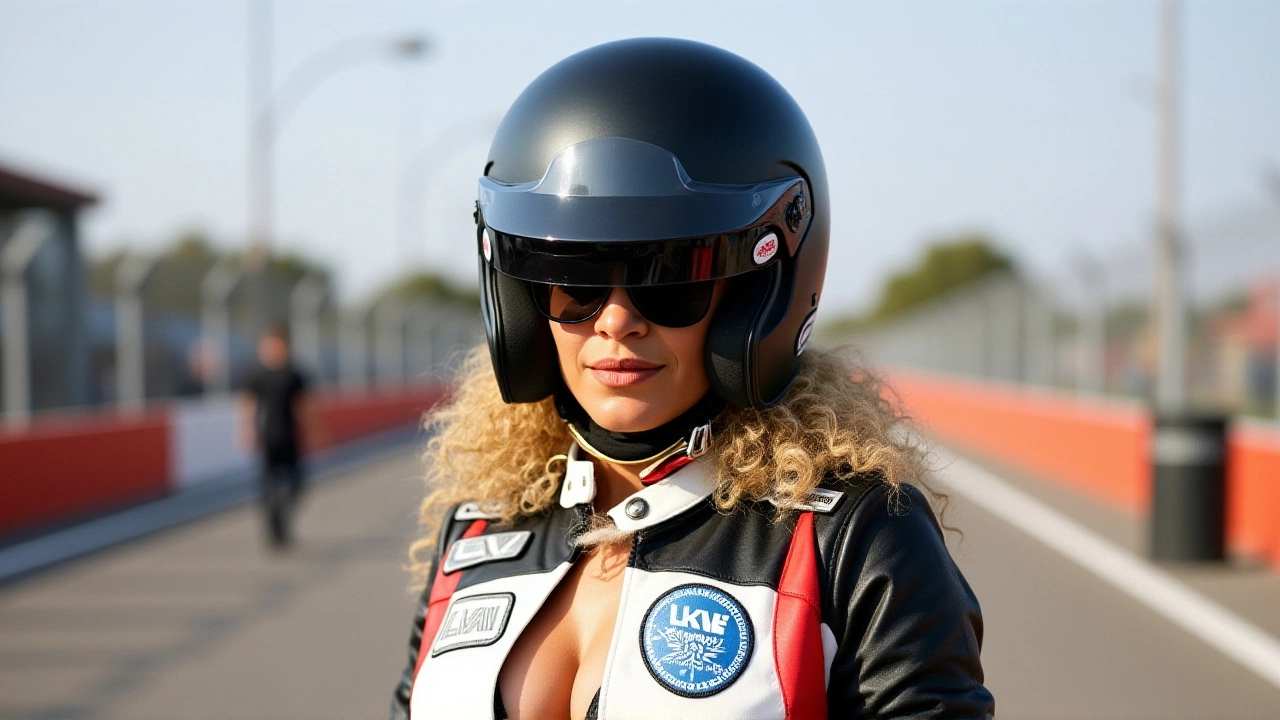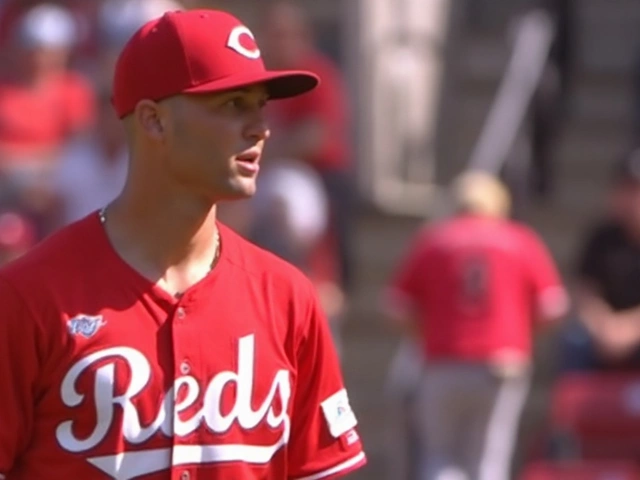McLaren Drivers Norris and Piastri Disqualified from Las Vegas GP, Sparking Championship Shake-Up

McLaren Drivers Norris and Piastri Disqualified from Las Vegas GP, Sparking Championship Shake-Up
When the checkered flag fell on the Las Vegas Grand Prix on Sunday, November 23, 2025, Lando Norris and Oscar Piastri were celebrating a dream result: second and fourth place, respectively. But two hours later, the euphoria turned to disbelief. The Fédération Internationale de l'Automobile (FIA) disqualified both McLaren F1 Team drivers for a technical infringement — their skid blocks, or planks, had worn down to less than 9 millimeters, violating Article 3.5.9 of the 2025 Technical Regulations. The team’s hopes of stretching Norris’ championship lead evaporated in a single, cold bureaucratic decision. And just like that, the 2025 F1 title fight went from a two-horse race to a three-way bloodbath.
How a Tiny Wear Strip Changed Everything
It’s easy to overlook the skid plank. It’s a thin, 10mm-thick wooden block bolted beneath the car’s floor, designed to prevent teams from running too low to the track — a tactic that generates extra downforce. As the car runs, the plank wears down. By regulation, it must remain above 9mm after the race. If it’s lower, disqualification is automatic. No exceptions. No leniency. Not even if the team says it was caused by wind gusts on The Strip, or by a misjudged curb hit in Turn 11, or by the fact that McLaren only had one full practice session due to rain delays.McLaren’s engineers argued all of that to the stewards. They pointed to the unusual conditions: temperatures swinging between 15°C and 22°C, gusts hitting 30 km/h, and the abrasive asphalt of the Las Vegas Strip, which is rougher than most circuits. They even suggested the floor may have shifted slightly after contact — unintentional, they insisted. The FIA didn’t dispute their claim of innocence. In fact, they said outright: “We strongly believe it was unintentional and it was not in any way deliberate.” But intent doesn’t matter here. The rules are written in stone. This isn’t a yellow card. It’s a red one. And it’s been that way since the 2000s.
The Championship Domino Effect
Before the disqualification, Norris led the Drivers’ Championship with 390 points. Piastri sat second with 360. Verstappen, who won the race, was third with 342. Norris’ podium finish would’ve pushed his lead over Piastri to 30 points — a near-insurmountable gap with only two races left. Instead, both McLaren drivers lost their points. Now, Norris still leads with 390, but Piastri and Verstappen are tied at 366. Three drivers. One title. And 58 points still up for grabs — including the sprint race points in Qatar.That’s not just a race. That’s a reset. Norris, who had been cruising toward his first world title, now has to fight for every point. Piastri, who had been quietly building momentum, suddenly has a shot. And Verstappen? He’s not just a challenger anymore. He’s the favorite. He’s won six races this season. Norris has five. Piastri has three. Tiebreakers favor Norris — but only if he finishes ahead. One mechanical failure, one mistake, one bad qualifying, and it’s over.

McLaren’s Strategic Nightmare
For McLaren Racing Limited, headquartered in Woking, this is a catastrophe. The team had been leading the Constructors’ Championship by 17 points over Red Bull. Now, they’ve lost 44 points — Norris’ 18 and Piastri’s 12, plus the 14 points Verstappen gained from winning. That’s a 58-point swing in one afternoon. Team principal Andrea Stella, who had been quietly building momentum for McLaren’s first title since 2008, now faces questions about car setup, strategy, and whether the team underestimated the Las Vegas circuit’s demands.McLaren’s lack of long-run testing due to weather is a legitimate concern. But so is the fact that other teams — including Red Bull and Mercedes — ran the same track with no plank issues. That’s the brutal truth of F1: if you’re the one who gets caught, it doesn’t matter if everyone else was lucky. You’re the one who made the mistake.
History Repeats Itself
This isn’t the first time F1 has seen a disqualification like this. In 2021, Alpine F1 Team was disqualified from the Monaco Grand Prix for the same reason. In 2023, Alpine faced another plank disqualification — this time in Monaco again. And back in 2021, the final race controversy in Abu Dhabi didn’t involve plank wear, but it did involve a rules interpretation that changed the title. The message from the FIA is clear: technical rules are non-negotiable. They’re the bedrock of fairness. Even if it feels unfair.As Max Verstappen said after the race, “It’s Formula 1. You either follow the rules or you don’t. If you break them, you pay the price. No one’s above it.” And he’s right. The system isn’t perfect. But it’s consistent. And in a sport where margins are measured in tenths of a second, consistency is everything.

What’s Next? Qatar and Abu Dhabi — The Final Two Acts
The Qatar Grand Prix kicks off on November 29, 2025, at the Lusail International Circuit. Then, exactly one week later, the season ends in Abu Dhabi on December 6. Both tracks are fast, technical, and unforgiving. Qatar’s long straights and high-speed corners will test aerodynamic efficiency. Abu Dhabi’s smooth tarmac and tire management challenges will favor reliability.McLaren has seven days to fix their floor setup, test new materials, and ensure their cars don’t come close to the 9mm limit again. But here’s the twist: they can’t just focus on their own car. They have to outperform Red Bull and Mercedes, too. And they have to do it while managing the emotional fallout of losing two podiums — and potentially, the title — because of a piece of wood.
For Norris, who spoke in French after the race — “Deuxième, ça reste un solide résultat” — the words now feel hollow. For Piastri, it’s a second chance. For Verstappen, it’s a gift. And for F1 fans? It’s the most thrilling finish in years.
Frequently Asked Questions
Why was disqualification mandatory, even though the infringement was unintentional?
The FIA’s technical regulations have always treated skid plank violations as automatic disqualifications, regardless of intent. This rule exists to prevent teams from gaining aerodynamic advantages by running dangerously low to the track. Even if damage or weather caused the wear, the rule is applied uniformly to maintain fairness. Precedents like the 2021 and 2023 Alpine disqualifications confirm this is not a new or arbitrary decision.
How does this affect McLaren’s chances in the Constructors’ Championship?
McLaren lost 44 points from Norris and Piastri’s disqualifications, while Red Bull gained 25 points from Verstappen’s win. The Constructors’ gap has narrowed from 17 to just 3 points. With 44 points still available in Qatar and Abu Dhabi — including sprint race points — McLaren now trails Red Bull in the standings, making their Constructors’ title hopes extremely slim unless they win both remaining races and Red Bull scores minimal points.
Who benefits most from the disqualification in the Drivers’ Championship?
Max Verstappen benefits most. He moved from third to a tie for second with Piastri, just 24 points behind Norris. With six wins this season compared to Norris’ five, Verstappen holds the tiebreaker advantage. If he wins both remaining races and Norris finishes lower than second, Verstappen could clinch the title — even if Norris scores more total points. The pressure is now on Norris to win, not just finish.
Why didn’t McLaren adjust their car setup earlier to avoid this?
McLaren cited limited testing due to weather-related cancellations of practice sessions and the inability to complete long runs needed to simulate race conditions. The Las Vegas Strip’s unique surface and high winds made it difficult to predict plank wear accurately. Other teams, including Red Bull and Mercedes, managed their wear better — suggesting McLaren’s setup may have been overly aggressive in pursuit of performance, a gamble that backfired.
Can Norris still win the championship after this?
Yes, but it’s harder. Norris needs to win both remaining races and hope Verstappen scores no more than 22 points total. If Verstappen wins one and finishes second in the other, he’ll have 413 points — enough to overtake Norris. Norris must now win both races and finish ahead of both Verstappen and Piastri in each — a tall order, but not impossible. The psychological pressure, however, will be immense.
What’s the likelihood of a rule change after this controversy?
Unlikely. The FIA has consistently upheld the automatic disqualification rule for plank violations for over two decades. While some fans and pundits have called for leniency — like a time penalty or point deduction — the governing body views consistency as more important than sympathy. Any change would require approval from all teams and the World Motor Sport Council, and there’s little appetite to weaken a rule that’s been a cornerstone of technical fairness.
Tentang
Oasis Judi 2014 adalah situs web yang menghadirkan informasi terkini seputar dunia judi dan permainan. Temukan berbagai tips dan trik menarik tentang poker, permainan kasino, dan lainnya. Bergabunglah dengan komunitas kami dan nikmati sensasi bermain yang seru dan menguntungkan.
Pos Terbaru


Bagaimana Anda mengalahkan pemain poker yang buruk?
Oleh Ardian Susanto Jul 26, 2023

Jenna Johnson’s Tough Run with Corey Feldman on DWTS Revealed by Maksim Chmerkovskiy
Oleh Ardian Susanto Sep 24, 2025

McLaren Drivers Norris and Piastri Disqualified from Las Vegas GP, Sparking Championship Shake-Up
Oleh Ardian Susanto Nov 23, 2025

Tulis komentar